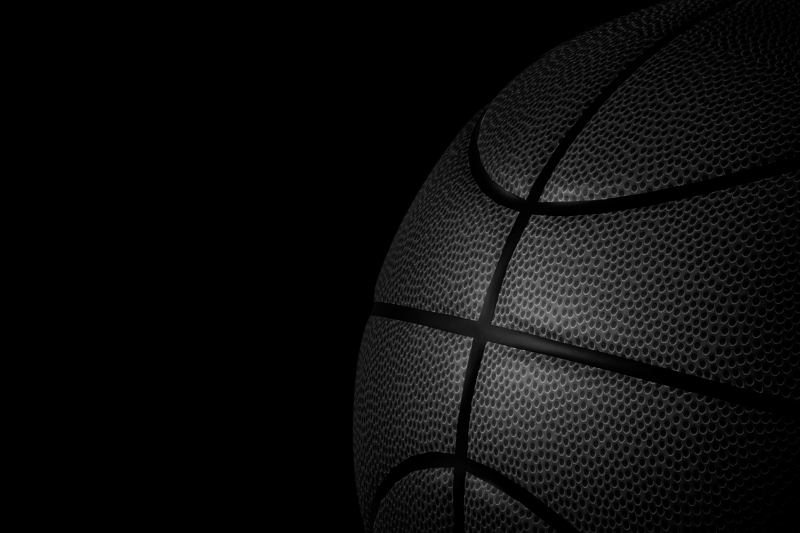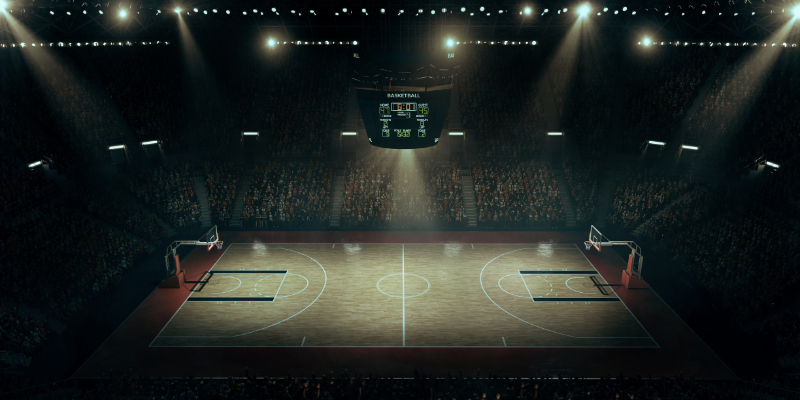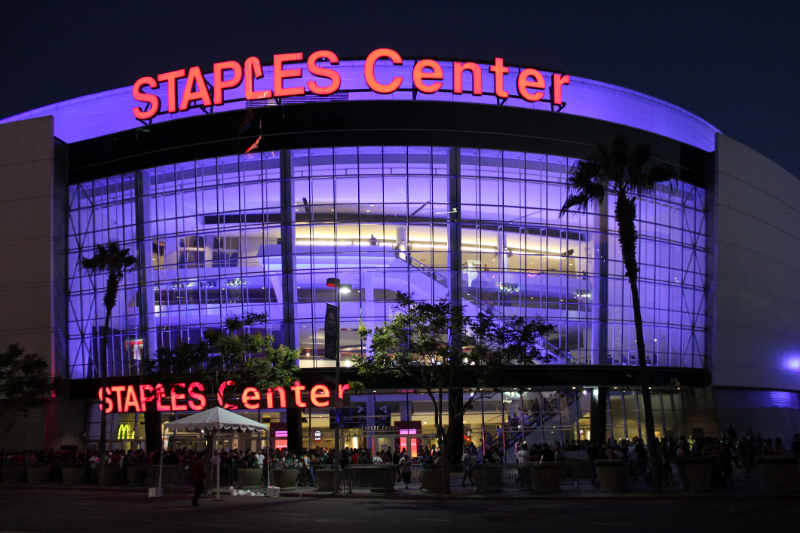The Los Angeles Clippers: From Underdogs to Championship Contenders

From its humble beginnings as the Buffalo Braves in the 70s to today’s competitive squad led by Kawhi Leonard, Russell Westbrook, and Paul George, the Los Angeles Clippers has a storied past marked by tragic setbacks and moments of triumph alike. Throughout the years, the franchise endured many challenges, from controversies and ownership changes to complete roster rebuilds.
With the start of the new season and a new arena in Inglewood on the horizon, let’s look back at the history of the Los Angeles Clippers.
Table of Contents
EARLY STRUGGLES AND RELOCATION
Tipping off in Buffalo
The Clippers franchise started in Western New York in 1970 as the Buffalo Braves, one of three expansion franchises of the NBA’s 1970-71 season, along with the Cleveland Cavaliers and the Portland Trail Blazers.
After two lackluster seasons since the franchise’s debut, the Braves started to gain success under former Philadelphia 76ers coach Jack Ramsey and forward/center Bob McAdoo, the 1973 NBA Rookie of the Year. The Braves earned a spot in the playoffs in the next three seasons, losing to the eventual Eastern Conference champion (the Washington Bullets in 1975) and the NBA champions (the Boston Celtics in 1974 and 1976).
After three promising seasons, franchise owner Paul Snyder and the NBA encountered problems with scheduling home games in the Buffalo Memorial Auditorium, which they shared with the NHL’s Buffalo Sabres and the Canisius Golden Griffins college basketball team. Canisius College had a pre-existing lease on the venue which made them the scheduling priority, while other dates for home games were already booked for the Sabres, a much more successful team than the Braves.
Perhaps seeing the Braves as a threat to their own success, the Golden Griffins intentionally scheduled all prime dates at Buffalo Memorial Auditorium to stifle any momentum for the Braves. As a result, Snyder sold the team to the ABA’s Kentucky Colonels owner, John Young Brown, Jr.
But Brown had other plans for the Braves. He completely rebuilt the roster and traded away all of its star players, causing attendance to plummet to a point where they were able to terminate the lease for the arena.
In 1978, Brown traded ownership of the Braves to Celtics owner Irv Levin, who then decided to move the team to San Diego. Levin previously attempted moving the Celtics but was denied by the NBA.
Rebranding and a new start in San Diego
After its former NBA team, the Rockets, moved to Houston seven years earlier, San Diego was excited to welcome the Buffalo Braves franchise to the city in 1978.
Team officials wanted a more fitting name for the city’s newest sports team and decided to hold a local naming contest. The winning name was the “Clippers,” a reference to the great sailing ships that once passed through San Diego Bay.
The change of name was apt: Clippers were rigged for speed, and the team’s new style of play under head coach Gene Shue thrilled the crowd with its faster pace that created many scoring opportunities. Despite the team’s entertaining style and the addition of World B. Free, a hot-shooting sophomore acquired from the Philadelphia 76ers, the Clippers had a rough start for the 1978-79 season.
It was only after the All-Star break that the team found their groove, climbing to the sixth spot in the Western Conference. The Clippers gunned for one of six playoff spots and managed to pull off an eight-game and five-game win streak during the final stretch. But it was not enough. The Clippers ended their first season in California with a 43-39 record, just two wins shy of the last remaining playoff spot in the conference.
The 1979-80 season was a promising one for the Clippers with the addition of San Diego native Bill Walton. Known as one of the finest all-around post players in the NBA, Walton was just two years removed from winning his first championship and the Most Valuable Player Award with the Portland Trail Blazers. Unfortunately, Walton missed the entire season due to a foot injury. The Clippers finished with a record of 36-46 and missed the playoffs yet again.
UNDER NEW OWNERSHIP

Moving to Los Angeles
In the 1981-82 season Clippers owner Irv Levin sold the franchise to attorney and real estate developer Donald Sterling for $12.5 million. It was another atrocious season for the team, with Walton missing the entire season once again because of his foot injury. The team closed with a dismal 17-65 record for the season.
In June 1982, the team owner attempted to move the franchise to Los Angeles but was denied by the league. This prompted an investigation by a committee of other NBA franchise owners. The committee recommended the termination of Sterling’s ownership citing his late payments to creditors and players as the main reason.
Days before a scheduled vote to oust Sterling as the team’s owner, he agreed to sell the Clippers, and the NBA looked for interested buyers willing to keep the team in San Diego. Former NBA commissioner David Stern (who was vice president of the league at the time), suggested that Sterling maintain his position as owner by assigning team operation duties to Alan Rothenberg, who eventually became president of the team.
Sterling relocated the Clippers to Los Angeles in 1984 despite being denied by the league. The NBA fined Sterling $25 million for an unauthorized move and filed a lawsuit that threatened to dissolve the franchise if ownership refused to comply. Sterling responded with an antitrust lawsuit against the league for $100 million. The NBA agreed to drop their lawsuit and reduced Sterling’s fine to $6 million in exchange for dropping his own case against the league. With that, Sterling maintained ownership of the Clippers and successfully moved the franchise to Los Angeles.
New city, same problems
With injuries to key players like Derek Smith, Marques Johnson, and Norm Nixon in the first two seasons in Los Angeles, the Clippers struggled with the very same problems they faced back in San Diego: Acquiring skilled veterans who were soon hampered by injuries after joining the roster.
This unfortunate trend (dubbed by sports writers as the “Clipper Triangle”) caused the team’s record to tank, finishing the 1986-87 season with an abysmal 12-70 record — one of the worst season records in NBA history.
First playoff appearance
The following years were plagued by more of the same: injured key players, subpar performances, and losing season records. It was only during the 1989-90 season that the Clippers began taking steps towards becoming a playoff contender with high-scoring shooting guard Ron Harper joining homegrown draft selections such as Ken Norman, Charles Smith, Danny Manning, and Loy Vaught.
In January 1992, the Clippers replaced head coach Mike Schuler with Larry Brown, who was recently fired by the San Antonio Spurs. With Brown at the helm, the Clippers ended the season with 23 wins and 12 losses for a 45-37 overall record — the first winning season for the franchise in over a decade. It was also the first time the Clippers finished with a better record than their crosstown rivals, the Los Angeles Lakers, since the franchise moved to Los Angeles.
The Clippers booked a spot in the playoffs in 1992 but were eliminated in the first round 3-2 by the Utah Jazz. The team lost again in the playoffs the following season, this time to the Rockets in five games.
A new arena

Anaheim, a suburb in Orange County, expressed interest in obtaining the Clippers in 1994. The team was already playing several regular season games at the Arrowhead Pond of Anaheim, which drew a higher average attendance per game compared to their games at their home court, the Los Angeles Memorial Sports Arena. A permanent move to Anaheim was nearly a done deal right before the 1996-97 season, but Donald Sterling rejected a deal that would’ve netted $95 million over 12 years for the franchise.
Plans for a $94 million 18,700-seat arena and an onsite practice facility for the Clippers were proposed by the Coliseum Commission, the management organization behind the Los Angeles Memorial Sports Arena. However, there was a more attractive option available just two miles away from the Clippers’ home arena: the new Staples Center in Downtown Los Angeles.
The Clippers officially became a tenant of Staples Center in 1999, along with the Lakers and the NHL’s Los Angeles Kings.
THE LOB CITY ERA
Forming a new core
Ever since moving to Los Angeles, the Clippers were overshadowed by the dynastic Lakers. Sports Illustrated even went as far as naming the team “The Worst Franchise in Sports History” in 2000.
All of this changed in 2011 when the team traded for All-Star point guard Chris Paul. Together with young, explosive bigs in Blake Griffin and DeAndre Jordan, the sky was the limit. Thrilled by the thought of the lobs and crazy alley-oops after hearing the news of Paul joining the team, Griffin blurted “It’s going to be Lob City!” in an interview. The name caught fire and quickly became the Clippers’ new nickname.
It was lightning in a bottle. With Paul’s quickness and exceptional court vision, the athleticism and rim-rocking prowess of Griffin and Jordan, and stellar play from its role players, the Clippers notched only its second winning season since 1992. Both Paul and Griffin were named All-Stars that year, the first time two Clippers were selected in franchise history.
While there were no championships, the Clippers managed to reach uncharted territory during the Lob City era. The core formed by Paul, Griffin, and Jordan fueled six years of playoff runs from 2012 to 2017. They won 313 regular season games in a span of six years, the third-best record in that time frame just behind the San Antonio Spurs and the Golden State Warriors.
The Sterling controversy
After owner Donald Sterling received a lifetime ban from the NBA for racist comments in 2014, Clippers ownership was up for grabs.
The league appointed former Time Warner and Citigroup chairman Richard Parsons as CEO of the Clippers before allowing former Microsoft CEO Steve Ballmer to purchase the team for $2 billion. Ballmer had to outbid other prospective buyers including Magic Johnson, Oprah Winfrey, Floyd Mayweather, and a group of crowdfunders.
Ballmer officially took control of the Clippers on August 12, 2014, following a court order confirming the sale. The deal included a stipulation that Ballmer would keep the team in Los Angeles.
Close to the top
The team’s first season under Ballmer’s ownership was considered one of the greatest Clippers teams assembled to never win a title. With head coach Doc Rivers, three All-Stars in their prime in Chris Paul, Blake Griffin, and DeAndre Jordan, sharpshooter JJ Redick, and a solid bench, the team was geared for a deep postseason run.
With a 3-1 series lead in the second round against the Houston Rockets, the Clippers were on the cusp of reaching the Western Conference Finals for the first time in franchise history. Unfortunately, the team was on the wrong end of one of the most incredible comebacks in playoff history. They dropped three consecutive games to the Rockets and were eliminated from the playoffs.
Had the Clippers advanced, they would have played the Golden State Warriors, which they eliminated in the playoffs in the previous season. The team had close regular season games with the Warriors and had plenty of experience facing the Warriors in a playoff series. Additionally, the Clippers would be coming from momentum-building series wins against the defending champion San Antonio Spurs and the No. 2 seeded Houston Rockets.
At the very least, it would’ve been a highly competitive and entertaining conference finals for a hungry Clippers squad looking to compete for the very first championship in team history.
THE RISE OF A NEW ERA

After several postseason failures and the current team on its last legs, the organization decided to tear it all down and go for a complete roster rebuild. To help retool the roster, the Clippers hired Jerry West as a special consultant, a two-time Executive of the Year winner, and the architect behind the 2000 to 2002 Los Angeles Lakers dynasty and the late 2010s Golden State Warriors.
In 2017, star player Chris Paul was traded to the Houston Rockets for a package of role players, a future first-round pick, and cash considerations. Blake Griffin and DeAndre Jordan — the last pieces of the Lob City era — were gone by the 2018-19 season.
Despite going through a rebuild, the Clippers performed decently, finishing the 2018-19 season with a 48-34 record and the eighth seed in the west.
All in
The summer of 2019 was a momentous offseason for the Clippers, with the signing of free agent Kawhi Leonard and the acquisition of six-time All-Star Paul George, creating one of the most formidable duos in the league. The pair could impact both ends of the court with their offensive versatility and tenacious defense, catapulting the Clippers as a perennial championship contender.
Sadly, the Leonard and George-led Clippers have failed to lead the team to the promised land during their last four seasons as teammates. Since signing with the Clippers in 2019, Leonard and George have played a total of 142 games together, with a record of 96-46. While it’s a strong indication that the team can win at a high rate whenever both are on the floor, both players have missed critical playoff games due to injuries.
Last stand
Could a fully healthy roster propel the Clippers to a deep postseason run in 2023-24? It might seem unlikely, especially with Leonard sidelined in the first round of last year’s playoffs due to a torn meniscus and George still recovering from his own knee injury.
Many, however, still believe that a Clippers team led by a healthy Leonard and George still stands to win the franchise’s first championship. Based on their moves this offseason, Clippers general manager Michael Winger and the rest of the front office seem to share that same view, which means fans can expect the star duo to get another crack at the title.
Assuming Leonard and George do stay with the Clippers this season, the only move will be to try and build a solid roster around them, which is easier said than done. With the NBA’s new seven-year Collective Bargaining Agreement, retooling a roster will be a challenge for even the biggest spending teams in the league.
It will be fascinating to see how the Clippers capitalize on a championship window that may soon be closing shut.
Visit our previous blog for a deeper look at Los Angeles sports culture and a glimpse of the luxurious homes of well-known sports figures in the city.

